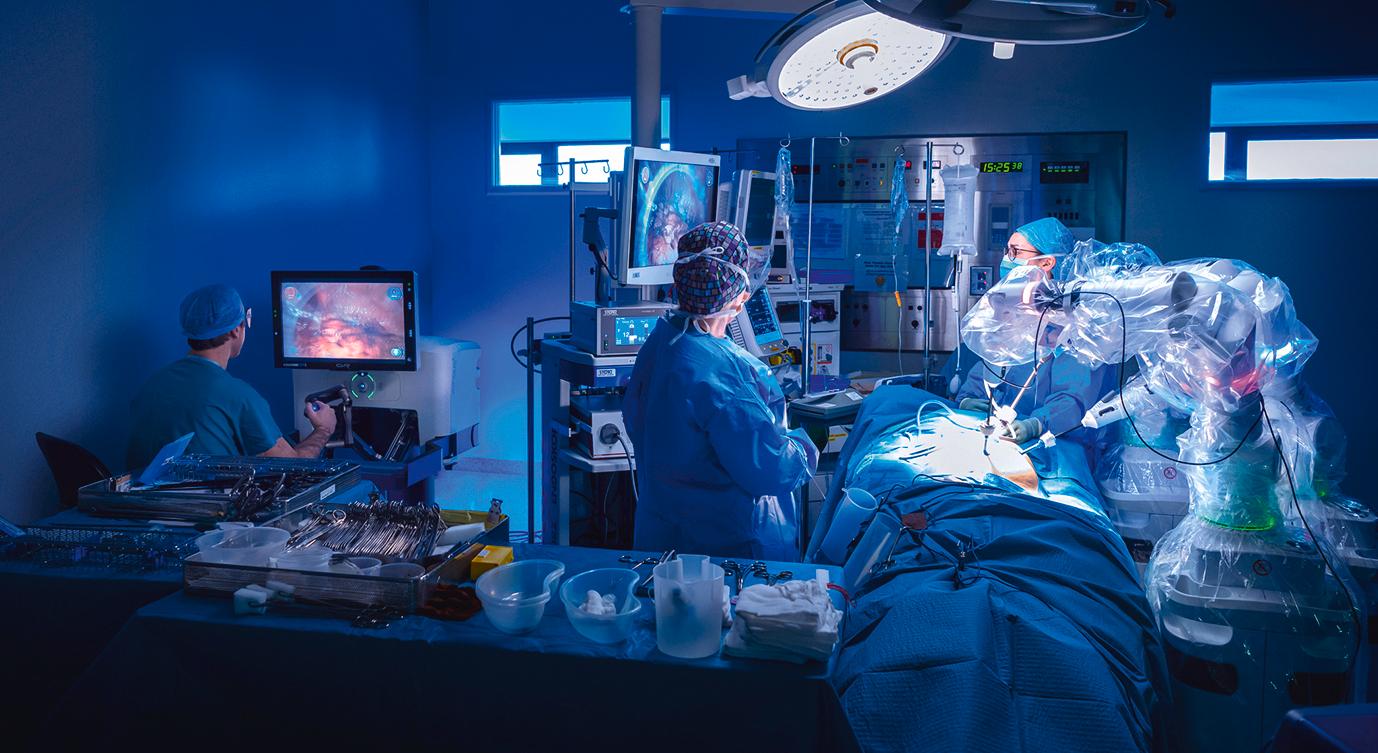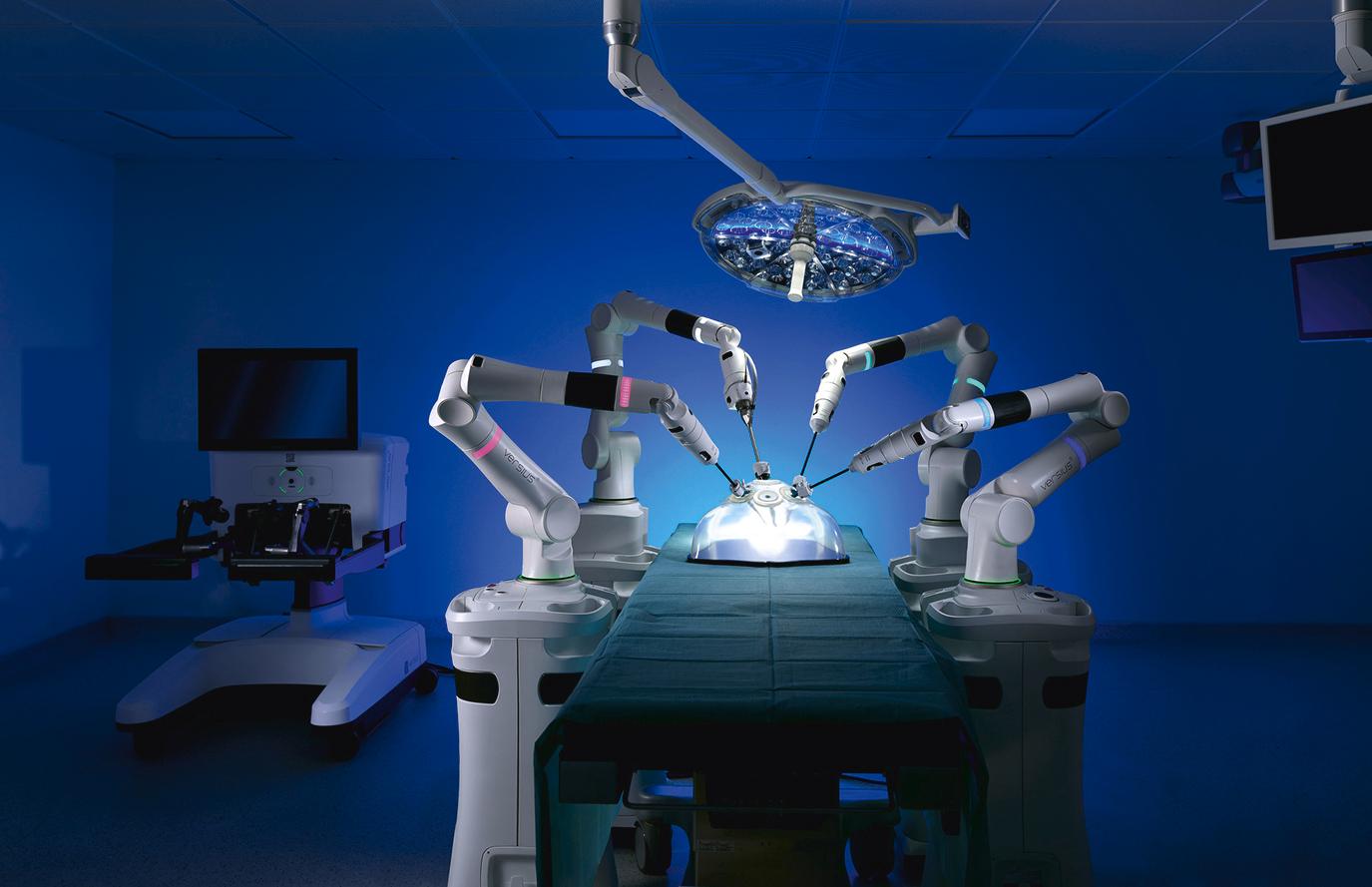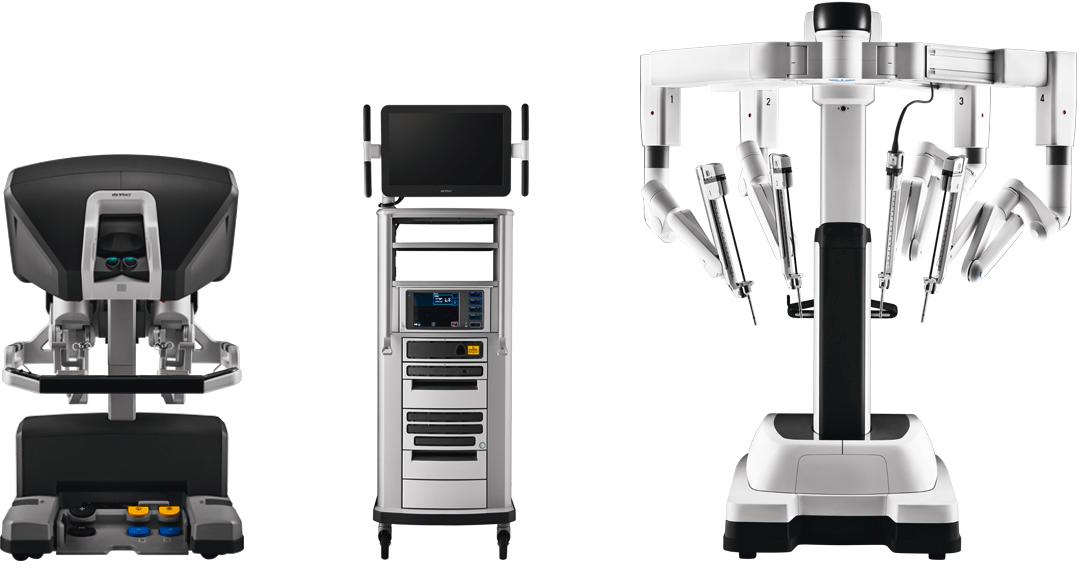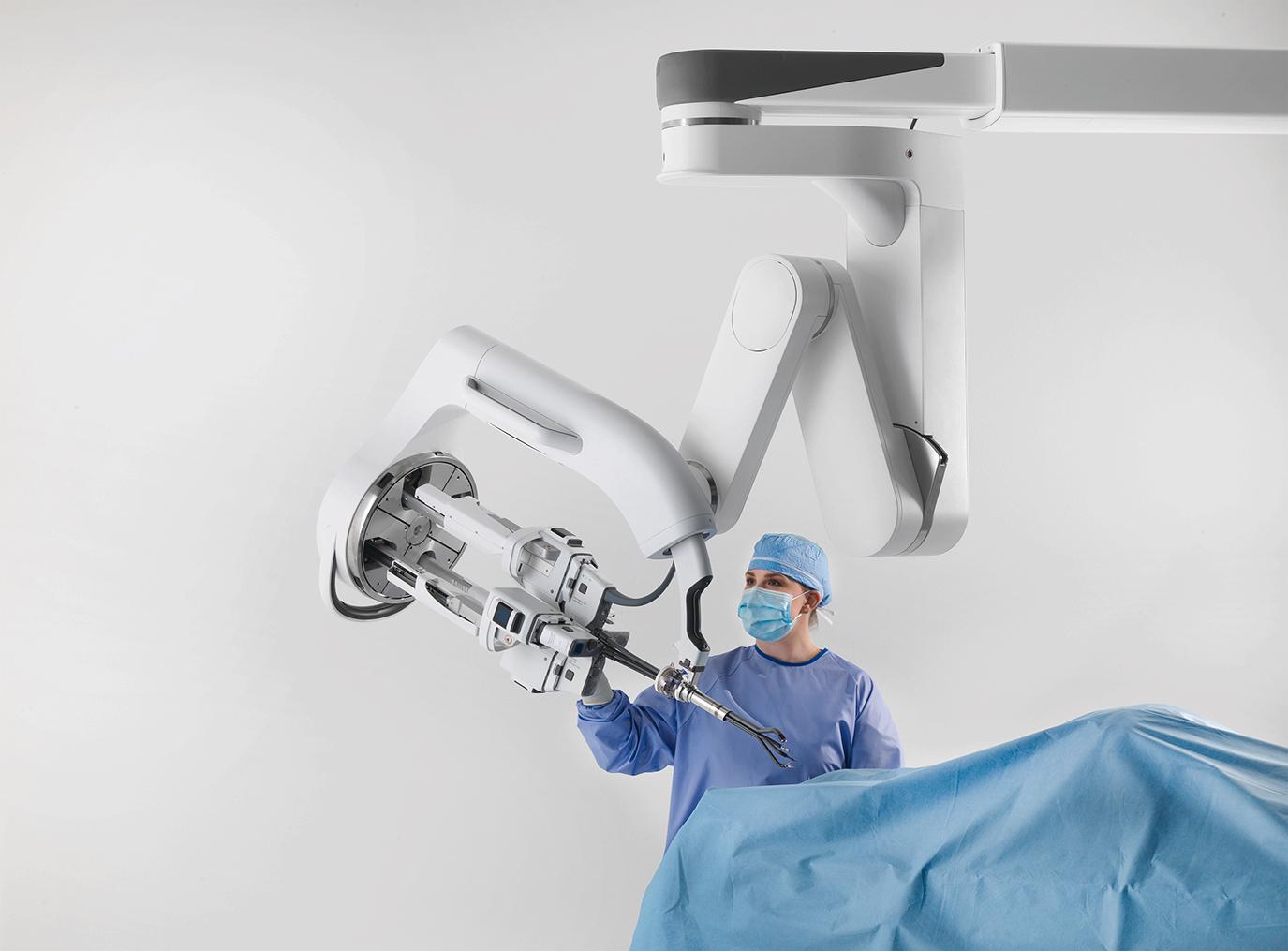Physical Address
304 North Cardinal St.
Dorchester Center, MA 02124
Innovation is a necessity for the art of surgery. It can be defined as the practical implementation of ideas that result in new services or the improvement of existing services. Innovation has been a key driver for continued improvement in patient outcomes over the last decades, and without innovation, the art of surgery might remain fixed, leading to relative stasis in outcomes. In this chapter, the introduction of new surgical technologies (with pertinence to general and vascular surgery) will be discussed. For ease of readability, the chapter has been compartmentalised into different sections. In reality, however, each of these sections actually overlaps, and each type of technology is not mutually exclusive. In fact, combining technologies in novel formats is a central tenet of innovation, leading to disruption of established industries and markets (e.g. development of the smartphone from the mobile phone). Technological combinations with the associated cross-pollination of ideas allows leaps forward in progress. In the future, such overlaps will be accompanied by a blurring of the separation between technology used at work and at home. The COVID-19 pandemic has already seen a dramatic upsurge in the number of medical (including surgical) staff working from home using electronic platforms for collaborative working and patient consultations (e.g. Near Me video consulting service ). However, such overlaps can also lead to problems through industrial patent wars and by providing users with an overwhelming choice of solutions for purchase. In this chapter, examples of existing technological solutions will be described, but such lists will be by no means exhaustive, and in the face of an ever-changing modern world, new products will be added daily. Furthermore, the reader should be aware that, in the absence of high-level evidence, product references herein do not represent endorsements.
Since the 1990s, laparoscopic surgery has revolutionised the field of general surgery by providing opportunities for earlier postoperative recovery combined with reduced patient morbidity, comparative oncological outcomes and better cosmesis . Recent advances in 3D laparoscopic surgery and ultra-high-definition endoscopic cameras have provided enhanced surgeon vision and depth perception with potential benefits in surgical precision. Laparo-endoscopic single-site surgery (LESS) and single incision laparoscopic surgery (SILS) have now also reduced the number of skin incisions to one for selected laparoscopic procedures, while natural orifice transluminal endoscopic surgery (NOTES) has eradicated the need for skin incisions completely by achieving access to the peritoneal cavity via an incision in the wall of a natural office (e.g. transvaginal cholecystectomy ). In some studies, the latter technique has been associated with reduced early postoperative pain and better cosmetic results compared with standard laparoscopic surgery, but it has been slow to be adopted internationally due to theoretical concerns associated with damage to the access orifice and associated bacterial contamination. Instead, robotic-assisted surgery (RAS) has risen to the fore as the next major advance in minimally invasive surgery (MIS), and the global surgical robotics market is anticipated to reach 98 billion USD by the end of 2024. Furthermore, single incision and NOTES-type approaches can still be offered through RAS (e.g. transoral robotic surgery [TORS] ). The proposed benefits of RAS include:
Increased dexterity and precision : These are achieved through fully wristed instruments giving 360 degrees of movement with 7 degrees of freedom, alongside motion scaling and eradication of physiological tremor. For these reasons, with regards to abdominal surgery, RAS has gained popularity for procedures focussed on difficult-to-access anatomical areas (e.g. pelvis ) or those requiring significant suturing (e.g. ventral wall surgery ) in an effort to reduce bleeding, increase rates of intracorporeal anastomoses, accelerate recovery and possibly reduce complications.
Increased magnification : Can be up to 10–12x.
3D visualisation.
Elimination of the fulcrum effect at the body wall : The robotic controls are moved in the same direction as the intended target/action rather than the mirror-image movements required by standard laparoscopy, thus aiding hand-eye coordination.
Improved ergonomics : The global increase in life expectancy has led to an increase in the retirement age in many countries. Despite this, up to a fifth of surgeons predict that they may need to retire early due to the chronic physical strain of performing standard MIS procedures. Most RAS platforms consist of a master–slave system ( Fig. 22.1 ) that permits enhanced surgeon comfort whereby the surgeon sits at a remote console to control the movements of multiple robotic arms. With increased comfort, it is hoped that such platforms may reduce the rate of chronic work-related injuries in surgeons.

Despite such proposed benefits, in the past, critics of RAS have argued that the expenditure (high costs including purchase, maintenance and disposable instruments), the size, weight and bulk of the platforms; length of operating time , , and the lack of evidence for clinical effectiveness over standard laparoscopic surgery , , should limit widespread adoption.
![]() Currently, a systematic review of randomised controlled trials indicates that, in most studies, abdominopelvic RAS is not associated with any difference in intraoperative complications, conversion rates or long-term outcomes compared with standard laparoscopic or open surgery. However, RAS is associated with fewer complications in a minority of trials. Overall, RAS is associated with longer operative duration than laparoscopy, but similar to open surgery.
Currently, a systematic review of randomised controlled trials indicates that, in most studies, abdominopelvic RAS is not associated with any difference in intraoperative complications, conversion rates or long-term outcomes compared with standard laparoscopic or open surgery. However, RAS is associated with fewer complications in a minority of trials. Overall, RAS is associated with longer operative duration than laparoscopy, but similar to open surgery.
However, more recently, some of these arguments are showing signs of being overcome. RAS companies are now offering different payment structures without large, upfront costs, and in the future, it is likely that RAS platforms will become more affordable. The recent development of mobile, modular systems (e.g. CMR Surgical Versius ; Fig. 22.2 ) has now also permitted ease of transportation between different theatres and indeed different hospitals, thus allowing the future implementation of RAS in smaller, non-tertiary centres with added potential for progress in telesurgery.

At present, the Da Vinci surgical system from Intuitive (Sunnyvale, CA, USA) remains the market leader. The newer Xi platform has integrated operating table motion ( Fig. 22.3 ), whereas the SP system allows single-port access ( Fig. 22.4 ). However, other robotic platforms are now also commercially available and becoming increasingly popular. Examples include the Versius (CMR Surgical, Cambridge, UK ), Senhance (Asensus Surgical US, Durham, NC, USA ), Revo-i (Meere Company, Seoul, South Korea ) and Dexter (Distalmotion, Switzerland ). The market for large surgical robots is likely to become increasingly competitive as major multinational corporations, such as Johnson & Johnson and Medtronic, develop their own platforms (named the Ottava and Hugo , respectively).


However, the robotic surgical market is not limited to large devices. There is also interest in smaller and medium-sized devices, and the perspective that robots represent the future of interventional procedures has led to advances in other fields, including NOTES, flexible endoscopy and even nanorobotics ( Table 22.1 ).
| Mode of Surgery | Example Devices | Manufacturer |
|---|---|---|
| Small robots | MIRA (Miniaturised In Vivo Robotic Assistant) Platform: investigative single incision device comprising two robotic arms and a camera, focussed on colonic resection | Virtual Incision (Lincoln, NE, USA) |
| NOTES | Hominis Surgical System : for transvaginal benign hysterectomy, salpingo-oophorectomy and ovarian cystectomy , | Memic Innovative Surgery (Memic) (Fort Lauderdale, FL) |
| Endoscopic | Invendoscopy SC210 system: flexible, self-propelling, singlse colonoscope Endotics: disposable, self-propelling robotic colonoscope aimed to reduce pain and lateral stretch Endomina: device used to perform endoluminal full thickness suturing , Flex Robotic System: initially designed for difficult to access anatomical locations, approved for transoral and transanal procedures , |
Ambu (Ballerup, Denmark) Era Endoscopy (Peccioli, Italy) Endo Tools Therapeutics (Brussels, Belgium) Medrobotics Corp., Raynham, MA, USA |
| Nanorobotics | Micro-robots that are ingested or implanted to treat medical problems, enable cell surgery, and target drug delivery, or used in other contexts in innovative devices , | Experimental |
RAS provides several challenges for surgeons in the future. First, in a multi-platform environment, we will need to ascertain which is the best robot for different surgical specialties and, indeed, different surgical procedures. Second, we will need to ensure that the adoption of such procedures is carried out in a safe and effective fashion, with standardisation of outcomes. The importance of training and validation will be paramount, and training pathways will need to be optimised and of consistent value across platforms. Third, we will need to provide evidence for equity of access within each healthcare system. At present, in developed countries like the USA, over 15% of all surgeries are performed robotically each year. However, low- and middle-income countries will have much lower rates than this, and how they will provide future opportunities for RAS remains an unanswered question. Equally, due to its inherent unpredictable and out-of-hours nature, emergency surgery is likely to lag behind elective surgery with regards to the adoption of RAS.
To achieve these various aims, further large-scale randomised clinical trials will be required with an overarching governance framework supported by international surgical institutions and colleges. However, achievement of these aims will also be eased by the next generation of robotic platforms, which will integrate data sources that can be used as audit tools, including video recordings of the entire operations and telemetric data from both the surgeon console and the robotic instruments. Such tools will also allow real-time and retrospective assessments of both technical and non-technical skills, thus refining training pathways and truncating learning curves. Most robotic platforms are linked to the web, and therefore surgeon-specific (and even patient-specific) data will be easily compared and benchmarked internationally. In terms of technological combinations, one can envisage that, in the future, robotic platforms are likely to integrate additional features, such as visual overlay of cross-sectional imaging results or spectrographic/imaging cancer detection systems. Da Vinci systems already offer Iris, which allows a segmented 3D model of patient anatomy (reconstructed from CT scans) to be used in case preparation, and Firefly fluorescence imaging, an integrated fluorescence capability that uses near-infrared technology (see below).
Become a Clinical Tree membership for Full access and enjoy Unlimited articles
If you are a member. Log in here